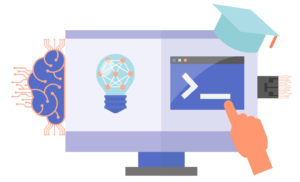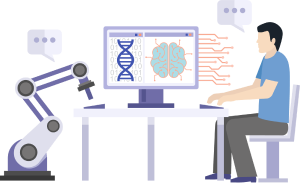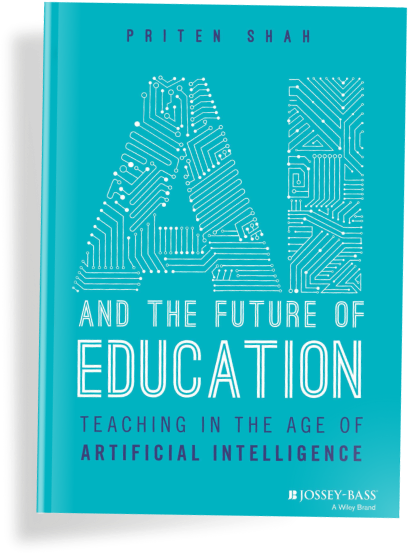Access our tools, lesson plans for AI integration & literacy, our prompt library, and webinars and courses through your account!
- Tool Library
- Lesson Plans
- Prompts
- Courses & Webinars
When developing a data-sharing policy for the incorporation of AI tools in schools, school districts should prioritize transparency, privacy, and security. First, the policy should clearly define what data will be collected, how it will be used, and who will have access to it. This includes specifying the types of AI tools that will be utilized and the educational purposes they serve. A strong emphasis should be placed on compliance with existing privacy laws such as FERPA (Family Educational Rights and Privacy Act) in the U.S., ensuring that student data is protected and confidential. Furthermore, the policy should involve stakeholders, including parents, teachers, and students, in its development to build trust and address any concerns regarding data use. Regular audits and updates to the policy should be mandated to adapt to new technologies and emerging risks, ensuring that the policy remains effective and relevant. Engaging in partnerships with AI experts and legal advisors can also provide school districts with the necessary expertise to formulate a robust and effective data-sharing policy.
When writing your syllabus for the semester, be sure to lay out your AI-use policy clearly for students. Check out the options below to use or edit to meet your needs.
The use of artificial intelligence (AI) tools is permitted in this course, but students must adhere to the following guidelines:
It is important to remember that while AI can be a powerful tool, it should not replace human critical thinking, creativity, and intellectual engagement. The goal of this course is to develop your own understanding and skills, and AI should be used judiciously to support and enhance your learning process, not as a means of circumventing it.
[School Name] recognizes the educational potential of artificial intelligence (AI) tools in enhancing student learning experiences. However, to maintain academic integrity and ensure that students develop essential skills, the following policy governs the use of AI tools in the classroom:
By using AI tools responsibly and in accordance with this policy, students can benefit from the educational advantages these tools offer while still developing the critical thinking, problem-solving, and communication skills necessary for their academic and future success.
The use of artificial intelligence (AI) tools in this course is subject to strict limitations. While AI can be a valuable resource for enhancing your understanding and organization, it is not permitted to be used in any way for graded assignments. The following guidelines must be adhered to:
It is crucial to understand that while AI can be a powerful tool for learning and understanding, it cannot be used as a substitute for your own critical thinking, analysis, and intellectual effort in graded assignments. The primary goal of this course is to develop your own skills and knowledge, and AI should only be used in a supportive capacity, never as a means of circumventing the learning process or producing graded work.
Note: Whichever policy language you choose should be edited to be specific to the course(s) that you teach, your student population, and the applicable AI tools.
In the evolving landscape of education, AI-powered tools such as ChatGPT, Claude, Gemini, Grammarly, and image generators like Dall-E and Ideogram, have become invaluable resources. These tools offer unique opportunities for learning, creativity, and efficiency. However, their use must be guided by responsibility and integrity to uphold the academic values of our institution. This section outlines the principles governing the appropriate use of AI-powered tools within our academic community.
Students must strictly adhere to any guidelines set forth by their teachers regarding the use of AI tools. It is essential to recognize that the permissible use of AI may vary by subject, class, or instructor. Teachers may provide specific instructions on how and when AI tools can be employed for assignments, projects, or research activities. These directives are designed to enhance the learning experience while ensuring the integrity of the academic process.
The use of AI must always be in strict compliance with our existing academic integrity guidelines. Academic honesty is the cornerstone of our educational institution, and any form of dishonesty undermines the value of your education and the trust within our community.
When utilizing content generated by AI, proper citation is mandatory. Students must clearly indicate any contributions made by AI tools in their work. Failing to attribute AI-generated content appropriately is considered a breach of academic integrity. This practice ensures transparency and upholds the standards of scholarly work.
AI tools should serve as aids to the learning process, not replacements for a student’s own critical thinking and creativity. Students must not claim AI-generated content as their own original work. The primary aim of these tools is to assist in the educational journey, providing support where needed, but never substituting the student’s intellectual effort.
Students are expected to use AI tools ethically and responsibly. The intention behind utilizing these resources should always be to enhance personal learning and academic performance positively. Misusing AI tools to harm oneself or others is strictly prohibited. This includes generating misleading, harmful, or offensive content.
Respect for privacy is paramount when using AI tools. Students must be cautious not to infringe upon their own privacy or that of others. This includes being mindful of the information shared with or generated by AI tools, especially personal or sensitive data.
Violations of these guidelines, including unauthorized use of AI, academic dishonesty, or breaches of privacy, will be addressed according to the school’s disciplinary procedures. Our institution is committed to maintaining a fair and just academic environment, and any infractions will be taken seriously.
As AI technologies continue to evolve, so too will our guidelines. We are committed to staying informed about advancements in AI and adapting our policies to ensure they remain relevant and effective. Students and faculty will be notified of any updates to these guidelines as technology and its applications in education progress.
Our collective adherence to these principles ensures that AI-powered tools are used in a manner that enriches the educational experience, fosters academic integrity, and respects the rights and dignity of all members of our community.
It may be useful to establish a formal process for teachers to request the use of a specific AI tool in their classroom. The form below is an example of one you might provide to educators for requesting the use or purchase of a new AI tool.
Date: [Insert Date]
Teacher’s Name: [Insert Name]
Department/Subject: [Insert Department or Subject]
Additional Comments or Considerations: [Include any additional information or special considerations relevant to the request]
Signature of Teacher: ____________________
[ ] Approved
[ ] Denied
[ ] More Information Needed: [Specify what additional information is required]
Comments from Administration: [Provide feedback, reasons for the decision, or next steps]
Signature of Administrator: ____________________
Date: [Insert Date]

Customizable AI Sentiment Google Forms:

Many AI tools (including some of the general AI tools such as Chat-GPT and Google Gemini) have their own business-friendly pricing models, which are likely a more affordable option than individual teachers requesting access to pro models of tools. These plans are also more convenient and allow schools to pay for tools upfront instead of handling reimbursements or distribution of the “company card”.
Never assume that teachers or administrators understand how to use AI tools! In order to break down all barriers between an educator and technology, Professional Development should be planned surrounding any AI tool that is embraced by a school or district.
Internet bandwidth and technological infrastructure impact the speed at which AI tools are able to function. Test your school’s internet speed today to determine whether an infrastructure upgrade may be necessary.
If you are not able to provide technology to every educator or student in your school, then consider creating “AI kiosks” within your school equipped with the latest computer models and premium bandwidth availability (consider Ethernet-connected devices for increased connectivity speeds).
Choosing the right tools and AI vendors can be confusing. Use the below rubrics to evaluate products and services before purchasing.
| Prohibitive | Functional | Exceptional | |
|---|---|---|---|
| Function of Tool | The overall function of the Al tool, or its benefit to educators or students, is unclear or undeveloped, which distracts from its overall practicality and potential. | The Al tool works as advertised; it effectively performs a task which enhances the student or teacher experience and improves the efficiency of classroom leadership or management. | The Al tool not only performs its advertised function effectively and efficiently, but also provides unrivaled benefits to students and teachers. |
| Scope of Use | The Al tool is inadequately specific to benefit a sufficient percentage of subjects or grade levels to justify its use in schools. | The Al tool’s scope and potential for educators to improve workflow or classroom leadership is adequate to justify its use in schools. | The Al tool is universally beneficial to educators and students, improving workflow and classroom leadership in all subject areas and grade levels. |
| Ease of Use | The usability of the Al tool is not intuitive, and the tool’s lack of support services or PD offerings prevent its use by all of its target audience. | The Al tool is user-friendly, and is able to be used by all educators either through intuitive exploration or company-provided PD or support services. | The Al tool is straightforward and effective; all teachers are able to use this tool without further guidance than the tool’s targeted PD, and any additional support is given in a clear and timely manner by the provider. |
| Cost | The Al tool exceeds the scope of the school’s available Al budget or is unreasonable given its functions and originality. | The Al tool’s price is reasonable given its scope and potential to improve teacher workflow and benefit student learning. | The Al tool’s price falls within a school’s budget allocated toward technological infrastructure improvements (or the Al tool is free!). |
| Privacy Policy | No privacy policy is provided, or insufficient in order to determine that educator and student data is safe and privacy is assured. | Privacy policy is legitimate and provides adequate evidence that educator and student data is safe and privacy is assured. | Privacy Policy is legitimate, clear, and detailed, demonstrating the security of the Al tool and the company’s commitment to ensuring data privacy. |
| Accessibility | The Al tool is not accessible to all. There are little or no intentional efforts made to ensure that all students and educators feel that the tool is made with their unique considerations in mind. | There are intentional efforts made by the Al tool’s manufacturer to ensure that accessibility of the tool is a top priority. If there are specific concerns about the accessibility of the product, then those are dealt with in a timely and professional way by the company. | The Al tool is available to all. There are no barriers preventing universal accessibility of the product and measures are taken to ensure that every educator and student feel that the tool is built for them. |
| Unacceptable | Acceptable | |
|---|---|---|
| FERPA Compliance | No mention of FERPA compliance or inadequate details included to ensure that the AI tool is in compliance with academic data protection compliance. | Explicitly ensures FERPA compliance and protection of academic data by discussing educator and company responsibility in the protection of student data. |
| Data Collection Policy | The AI tool does not provide a clear data collection policy, or the policy allows for the collection of sensitive data without clear educational justification or security measures. | The AI tool has a transparent data collection policy that limits collection to what is necessary for educational purposes and ensures the security and privacy of student information. |
| Data Sharing Policy | The policy allows for sharing of data with third parties without clear educational benefits or necessary privacy protections. | The policy restricts data sharing, ensuring that any data shared is with approved parties for educational purposes only, with all necessary privacy protections in place. |
| Consent | The AI tool is used without obtaining proper consent from students or guardians, or consent is not informed and voluntary. | The tool requires informed consent that is age-appropriate and provides options for guardians and students to give, deny, or revoke consent. |
| Opt-Out Policy | There is no clear opt-out policy, or opting out is made difficult, thereby limiting the rights of students and parents. | There is a straightforward and accessible opt-out policy that allows students and parents to refuse or discontinue use of the AI tool without penalties. |
| Transparency | The AI tool’s operations, data use, and algorithms are opaque, with no information provided to users. | The tool provides complete transparency about its operations, including data use, algorithms, and the decision-making process. |
| Independently Verified | The AI tool lacks independent verification of its educational claims, data security, or compliance with laws and policies. | The tool has been independently verified or certified on a state or local level for its educational effectiveness, data security, and policy compliance. |
| Vendor Reputation | The vendor has a poor reputation, with documented cases of data breaches, non-compliance with educational laws, or unethical practices. | The vendor has a strong, positive reputation with a track record of ethical practices, compliance with educational laws, and a commitment to data privacy and security. |
It’s critical to educate parents about your AI policy in order to assuage concerns, keep an open dialog, and ensure your AI policies are adhered to at home.
What should you ask a PD provider?
The purpose of this course is to train teachers and administrators who want to be prepared to help others at their school navigate the impact of AI on education. By the end of this course, they will be prepared to show teachers the various ways that they can use AI in their workflow and teaching, lead conversations about the ethical and security concerns posed by AI, and have important conversations with various stakeholders.
Click Here to Register!
Take Your Book Club Or PLC Meetings To The Next Level With Our Free Guide!
We will work with you to determine a price based on budget, availability, workshop length, and number of participants.

We can accommodate requests for workshops ranging from 1 hour to multi-day events and conferences.

We can accommodate in-person workshops in and around New York, including New Jersey, Connecticut, and Massachusetts. We may also be able to travel in some instances. Virtual workshops available worldwide!